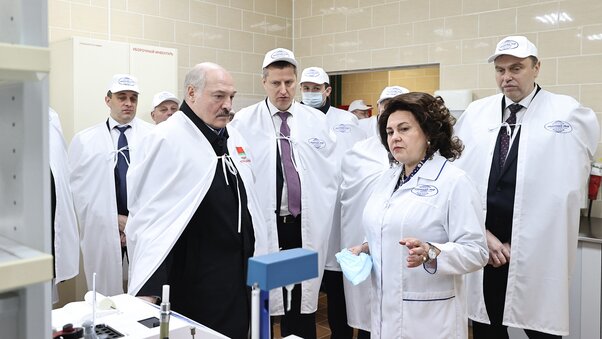Visit to Polesie state radiation and ecology reserve
- 25
- 5
There is a need for clear planning in what concerns the development of the Chernobyl-affected areas, Belarus President Aleksandr Lukashenko said as he visited the Polesie state radiation and ecology reserve in Narovlya District on 24 April.
Apart from the district center, Narovlya District has a number of settlements, including agro-towns. The head of state underlined that in the future it is important to understand where exactly people will live in these areas. This is true not only about Narovlya District, but also about Bragin District, Khoiniki District and other areas.
The plans should first include steps to develop certain areas of economic activity and create jobs near large settlements and district centers. This should comprise not only agriculture, but also forestry, tourism, small industries and other sectors. For example, new mineral deposits are being discovered in the region.
“We need large settlements. We need to have a clear idea of where people will live,” said the head of state.
The Belarusian leader slammed the current state of affairs and work in this direction as insufficiently satisfactory. “I think we do not pay attention to this area on a regular basis,” the President said, emphasizing the need for more significant results.
Aleksandr Lukashenko demanded a complex approach and ordered to think it over and write it out in a new program, similar to the one for the southeast part of Mogilev Oblast. He put a special emphasis on the development of forestry, including reforestation, logging and processing. “It is necessary to build as many processing enterprises as necessary here. We should proceed not from the point of view of jobs, but from the point of view of efficiency. We need to make clear decisions regarding all these three areas, especially the zone,” the President said.
“We need to decide in general what we are going to do here. We have to finally decide where we will be working under investment projects. We must not abandon these lands,” the Belarusian leader stressed. He added that the state has not abandoned these lands, and a lot has already been done but there is a need for more progress.
Aleksandr Lukashenko stressed that the maximum should be done during the current five-year period. “The south of Belarus is our reserve, which we have not paid attention to. It is time for these lands to be recovered. If we, I mean the current generation, do not do it, no one will do it within another 35 years,” he said.
At the Polesie state radiation and ecology reserve in Narovlya District Aleksandr Lukashenko visited the former village of Teshkov which is now home to a bee apiary. Thanks to the competent organization of the work, the apiary produces high-quality honey even on the contaminated area. The head of state believes that this area can be further developed because there is still a huge untapped potential. Aleksandr Lukashenko also tasted the local products.
The President met with craftsmen specializing in vine weaving, straw weaving and wood carving. The head of state said that, although the state had provided opportunities for the development of craftsmanship and self-employment, there was also a need to promote these products in the markets and do the best to commercialize them.
Aleksandr Lukashenko also visited a horse breeding farm at the Polesie state radiation and ecology reserve and got familiar with the organization of breeding and rearing of pedigree horses. The head of state was assured that on the whole it was a promising area for the region. However, it is necessary to further explore the possibilities of expanding the fodder base.
Aleksandr Lukashenko was also briefed on the social and economic development of Gomel Oblast and Narovlya District. The area’s GRP grew 1.4% in Q1 2021. In January-March, the industrial output index was 111.6%. The stocks of finished goods in warehouses are on a decline. Foreign trade in goods also showed an upward trend. The trade in January-February reached almost $745 million, up $198.7 million from the same period in 2020. However, the agricultural sector is lagging behind due to the lack of funds. Gomel Oblast Governor Gennady Solovei told the President what was being done to improve the situation.
The President was also reported on the fulfillment of the instructions regarding the development of the experimental economic and conservation zones of the reserve, the prospects for further development of the 30-kilometer zone around the Chernobyl nuclear power plant. The report also included the results in the implementation of the measures of the state program to mitigate the consequences of the Chernobyl accident, which include such areas as social protection, social and economic development of the affected regions, radiation protection and targeted application of protective measures.


